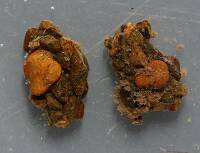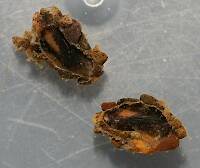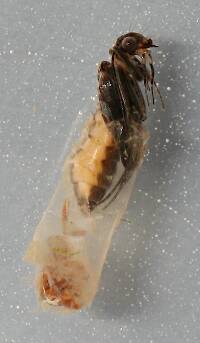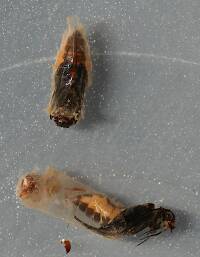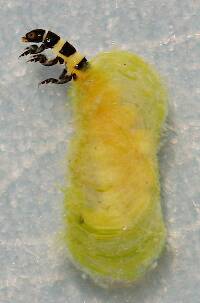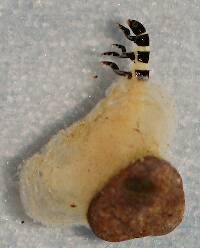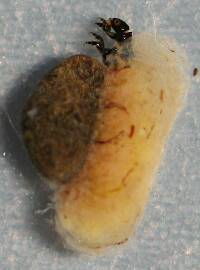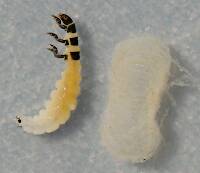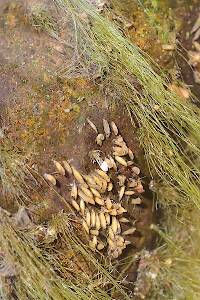
Hex Mayflies
Hexagenia limbata
The famous nocturnal Hex hatch of the Midwest (and a few other lucky locations) stirs to the surface mythically large brown trout that only touch streamers for the rest of the year.
Featured on the forum

This wild-looking little thing completely puzzled me. At first I was thinking beetle or month larva, until I got a look at the pictures on the computer screen. I made a couple of incorrect guesses before entomologist Greg Courtney pointed me in the right direction with Psychodidae. He suggested a possible genus of Thornburghiella, but could not rule out some other members of the tribe Pericomini.

Troutnut is a project started in 2003 by salmonid ecologist Jason "Troutnut" Neuswanger to help anglers and
fly tyers unabashedly embrace the entomological side of the sport. Learn more about Troutnut or
support the project for an enhanced experience here.
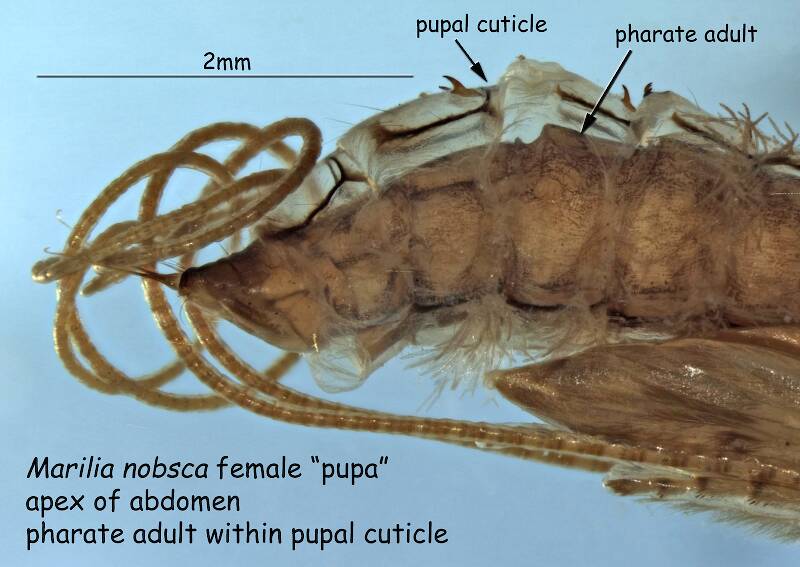
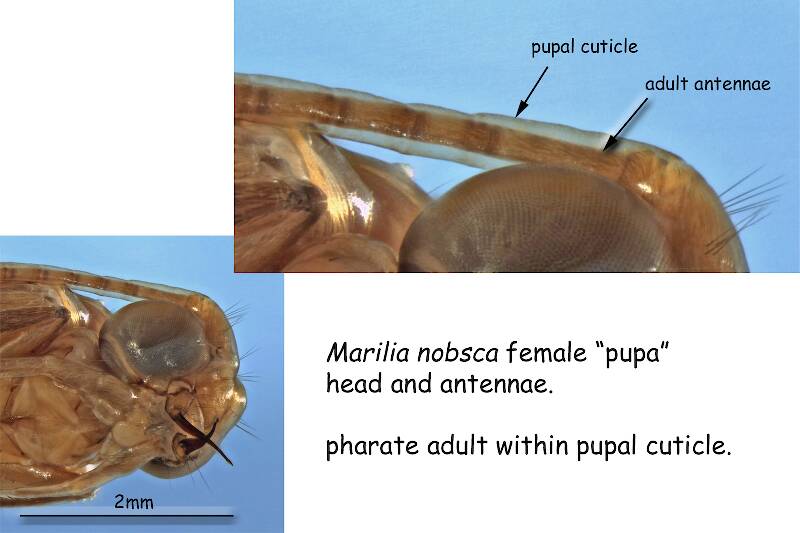
Creno on Aug 1, 2012August 1st, 2012, 7:33 pm EDT
Here are a couple pics of a caddis pharate adult separated, but within, the pupal skin. The pupae was removed from the closed pupal case. In the photo of the abdomen you can see the wing pad and it is not completely darkened so this "pupae" was not quite ready to leave the case yet.
PaulRoberts on Aug 2, 2012August 2nd, 2012, 6:30 am EDT
Thanks for posting these.
Martinlf on Aug 2, 2012August 2nd, 2012, 7:31 am EDT
Cool. This somewhat confirms the ideas behind the LaFontaine caddis and similar halo patterns.
"He spread them a yard and a half. 'And every one that got away is this big.'"
--Fred Chappell
--Fred Chappell
PaulRoberts on Aug 2, 2012August 2nd, 2012, 8:35 am EDT
Cool. This somewhat confirms the ideas behind the LaFontaine caddis and similar halo patterns.
I'm not convinced of that -yet.
Martinlf on Aug 2, 2012August 2nd, 2012, 9:16 am EDT
somewhat? :)
"He spread them a yard and a half. 'And every one that got away is this big.'"
--Fred Chappell
--Fred Chappell
Entoman on Aug 2, 2012August 2nd, 2012, 11:04 am EDT
I think the difference may be just semantics. When LaFontaine discusses the "bubble" look, he is clearly referring to the reflective or translucent character of the separated cuticle. Use of the word does open up the possibility for misinterpretation as a gas bubble encased in water pressure is undoubtedly more reflective than either gas or molting fluid encased in a cuticle. If memory serves, these subtleties are not addressed in his writings, and it certainly doesn't help by attaching adjectives like "bright" and "shiny", either.:) What is undeniable is that there is a big difference between the look of a diving egg layer and an ascending pupa in terms of brightness. Personally, I wouldn't describe a pupa as looking like a bright or shiny bubble.
"It's not that I find fishing so important, it's just that I find all other endeavors of Man equally unimportant... And not nearly as much fun!" Robert Traver, Anatomy of a Fisherman
PaulRoberts on Aug 4, 2012August 4th, 2012, 7:14 am EDT
If you look at pharate pupae (look at all the images you can find) you'll see that the largest amount of excess skin is around the abdomen, and at at the very tip is a bag of skin. If a gas was forced into this skin, wouldn't the insect buoy up abdomen first? There is comparatively little loose skin up front. And the abdomen, where the rete (gills in larvae/spiracules in adults) is located, would seem to be the most likely place for gas production.
PaulRoberts on Aug 5, 2012August 5th, 2012, 7:47 am EDT
Gills appear to be intact -Not dessicated.
Quick Reply
Related Discussions
Topic
Replies
Last Reply
12
Apr 10, 2015
by Entoman
by Entoman





